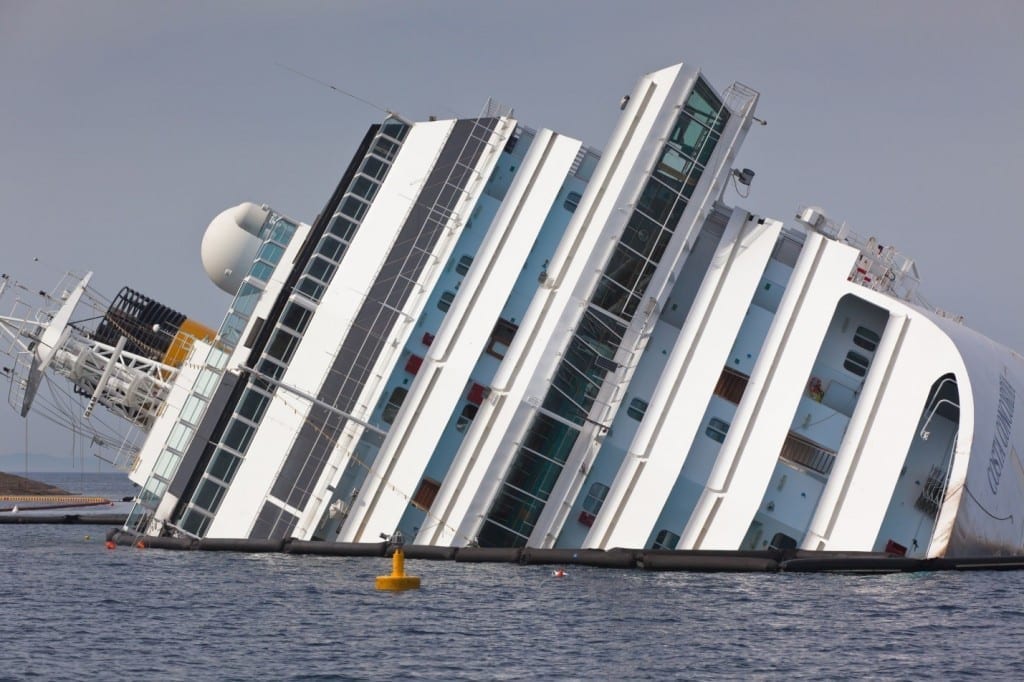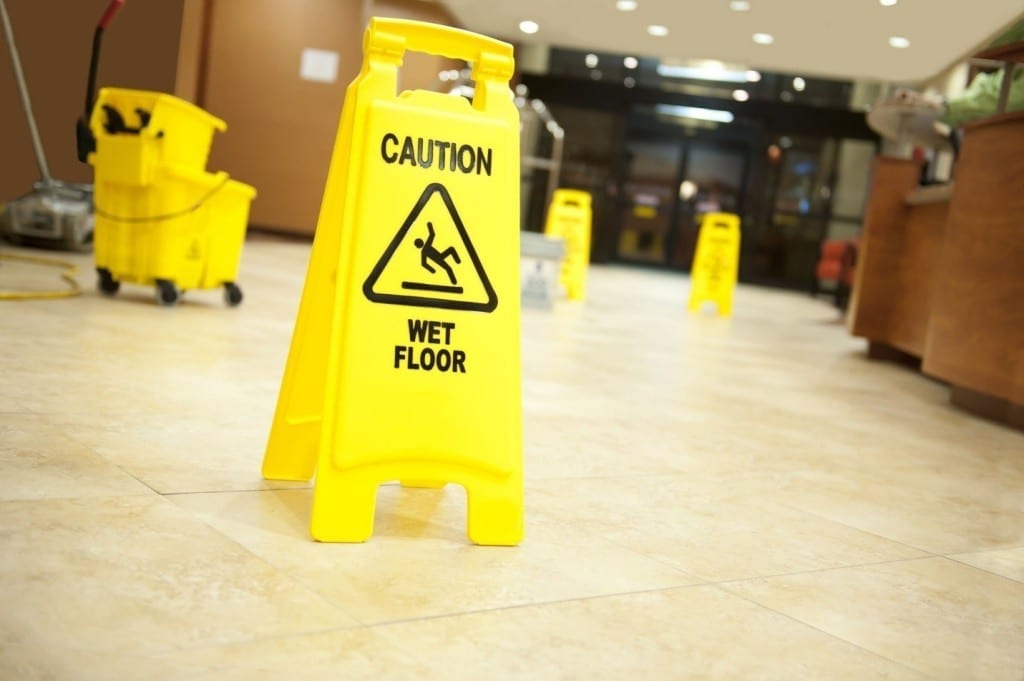Every year, around 20,000,000 people choose to spend their vacation on the board of a cruise ship (21,556,000 passengers reported in 2014, expected to increase to 24,146,000 by 2018). With amenities such as piazza-style atriums, planetariums, water parks, rock climbing walls, full-sized carousels, skydiving, and bumper cars, cruise ships are more like floating cities offering infinite opportunities for world-class food and leisure. And some of them are true behemoths. The largest ship ever constructed, the Allure of the Seas, measures 1,181 ft., has around 100,000 metric tons, a theater with 1,380 seats, a two-deck dance hall, an ice skating rink, and even its own Starbucks, the first ever to be built on the board of a cruise ship. It cost a staggering $1.5 billion to build.
But despite the incredible amenities and hard-to-refuse perks, the “once-in-a-lifetime” experience as a cruise tourist has started to be seen more as “dangerous” and “life-threatening” than “unique” and “unforgettable.” The public perception of the cruise industry has plummeted, and a significant percentage of the usual customers of cruise lines are looking elsewhere for spending their family vacations. What has happened is, a myth has been shattered regarding cruise ships’ safety and unsinkability, becoming clearer that the luxurious floating cities are not, in fact, as safe as advertised. Moreover, following a series of calamities in the past few years, they came across as crime and disease hotbeds.
A Cruise Tourist’s Greatest Threat: The Norovirus
An average of 14 ships per year report outbreaks of diarrheal illness, and the cause is invariably the same: norovirus. Affecting more than 21 million Americans annually, the virus is the main cause of gastroenteritis in the U.S., according to statistics from the Centers for Disease Control and Prevention (CNC). The norovirus thrives in closed spaces such as dormitories, health care facilities, nursing homes, and cruise ship cabins; it spreads fastest through contaminated food and water and causes vomiting, loose stool, headache, fever, and muscle pain. The disease is not considered severe
(although there is still no known treatment for it) and it usually lasts for only a few days.
Although norovirus outbreaks make headlines and usually constitute the main reason cruise lines’ credibility plummets, there isn’t always a clear indication that the contamination happened on board. Passengers are usually the ones deemed responsible for carrying the virus on board and then leading to its rapid spread through contact with doorknobs, handrails, toilet seats, etc.
“We have implemented enhanced sanitation procedures onboard [Crown Princess] to interrupt the person-to-person spread of this illness,” said Karen Candy, spokesperson for Princess Cruises, in an email statement for CBS News. “Our sanitation program has been developed in coordination with the CDC and includes such measures as thorough disinfection of high-touch surfaces like railings, door handles and elevator buttons; encouraging passengers to use correct hand washing procedures and enhancing this with the use of hand sanitizing gels placed throughout the ship; isolating ill passengers in cabins until non-contagious; encouraging passengers to use their own cabin’s bathroom facilities; and providing regular verbal and written communication to passengers about steps they can take to stay well while onboard.”
But there is also evidence stating otherwise. In a study published in Clinical Infectious Diseases magazine, researchers from the Boston University pointed out to the staff’s failure to clean restrooms and conducting proper examination of the cleaning processes as the principal cause of the outbreak. Of the 8,344 objects marked with a substance visible only exposed to ultraviolet light, including flush handles, toilet seats, door handles, and other objects in toilets, only 37 percent were cleaned daily. The baby-changing tables marked on the three ships that provided them were never cleaned during the three-year period the study lasted.
Boarded for Relaxation, Stranded at Sea
Despite the numerous laws and strict regulations concerning safety at sea, the number of cruise ship accidents increased directly proportional to the number of cruise ships built annually. No doubt about it, technological advances have allowed the industry to make significant improvements in the areas with increased risk. The International Maritime Organization (IMO) mandates global standards regarding cruise ship safety and operation, while the Cruise Lines International Association (CLIA) and its partnership with the U.S. Coast Guard ensures all ships meet the international requirements for safety, security, and environmental protection.
Inspections are carried out periodically to assess structural fire safety, proper functioning of firefighting systems, and lifesaving equipment. More than that, “the U.S. Coast Guard observes fire and abandon ship drills conducted by the ships’ crew, and requires satisfactory operational tests of key equipment such as steering systems, fire pumps and bilge pumps.”
Five firefighting teams undergoing extensive and advanced shipboard training, 4,000 smoke detectors, 500 extinguishers, 5,000 sprinkler heads, and about 6 miles of fire hose – the basic kit of an average cruise ship – should be reassuring enough for any tourist, no matter how panicked. And yet, a closer look at the cruise ship industry today reveals that it is still facing tremendous safety and security challenges. A few recent events confirm it:
- Norwegian Dawn, 2005: A 70-foot wave hit the Norwegian Dawn while sailing between New York City and the Bahamas, flooding at least 62 cabins and injuring two passengers. Approximately 300 passengers were disembarked in Charleston.
- Costa Concordia, 2012: The ship toppled on its side after hitting a reef on the coast of Tuscany, Italy, killing 32 and injuring 64 of the total 4,200 passengers on board.
- Carnival Triumph, 2013: Due to a fire in the engine room, the ship was stranded at sea in the Gulf of Mexico for almost a week, without power, air conditioning, or a functioning septic system, leaving passengers to survive on limited reserves of food and water.
- Seabourn Spirits, 2005: While sailing about 100 miles off the coast of Somalia, the ship was attacked by pirates in speedboats who, armed with machine guns and grenades, opened fire on it. Of the 300 passengers, none was hurt, and the ship managed to escape and safely sail to Seychelles.
- Carnival Splendor, 2007: Similar to the Carnival Triumph, the Splendor was stranded at sea after the engine room caught fire, cutting off power and leaving the 3,299 passengers without toilets and limited food resources for 13 hours.
Slip & Fall Accidents, a Common Occurrence
The polished decks of a cruise ship can lead to many slip and fall accidents, rapidly bringing what could have been a memorable vacation to a tragic end. Although cruise ships may not seem a likely location to cause such accidents, it is often the water on deck, spilled drinks, recently mopped floors, uneven flooring, improper lighting, and obstructed pathways that may cause a passenger to fall and hurt himself. These kind of incidents don’t always have severe consequences, but it’s not uncommon for slip and fall incidents to lead to broken bones, back injuries, brain injuries, or even death by drowning.
Unfortunately, when it comes to proving it was the staff’s or the company’s negligence that caused the accident, passengers have little chance of succeeding on their own. And that’s because big cruise lines take the necessary precautions to discourage people from suing. The contract handed to every passenger who purchases a ticket contains 10 to 15 pages of terms and conditions, also including provisions according to which passengers cannot sue due to emotional distress. Whether they slipped and fell or were stranded in the middle of the ocean with limited supplies of food and water, they must document the existence of real physical injuries to have a case.
“They’re trying to control what one can and can’t hold them responsible for,” said cruise line expert Ross Klein. “Generally, there’s very little you can do legally. […] The actual cases that can go forward are somewhat limited. It’s going to come down to how creative the lawyers are going to be.”
Other precautions cruise lines typically include in the contract (that largely goes unread) are a damages cap (little over $500,000), a limit period to file suit (a year, in most cases), and sometimes a requirement to give notice of the intention of filing a lawsuit six months prior to filing. Theoretically, passengers are entitled to sue not only over injuries sustained in trip and fall accidents caused by the cruise line’s staff, but also over norovirus and motion sickness, although with limited chances of success.
Ultimately, anyone who boards a cruise ship should be aware of the risks and safety challenges the cruise ship industry is still confronted with. As ships are getting bigger in order to accommodate a larger number of people, the issues of effective evacuation and quantity of lifesaving equipment naturally come into mind. The number of norovirus outbreaks, as well mishaps and slip and fall accidents may not be overwhelming compared to their occurrence rate on land, but it certainly is an indication that the cruise ship industry can do more to protect its passengers and ensure not only their comfort, but also their safety and well-being for the entire duration of the cruise.
About the Author
Andrew Winston is a partner at the personal injury law firm of The Law Office of Andrew Winston. He has been recognized for excellence in the representation of injured clients by admission to the Million Dollar Advocates Forum, is AV Rated by the Martindale-Hubbell Law Directory, and was recently voted by his peers as a Florida “SuperLawyer”—an honor reserved for the top 5% of lawyers in the state—and to Florida Trend’s “Legal Elite.”









